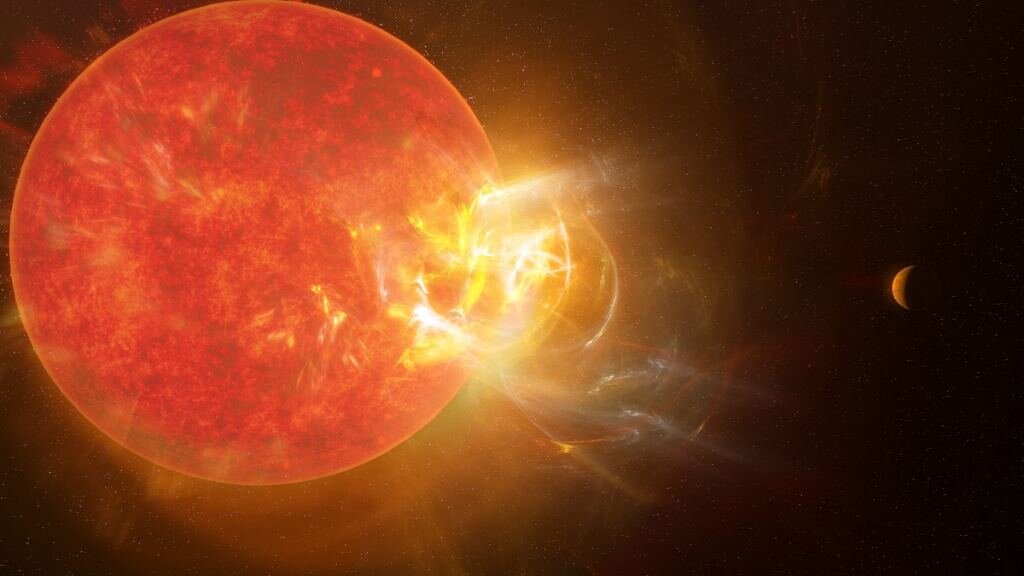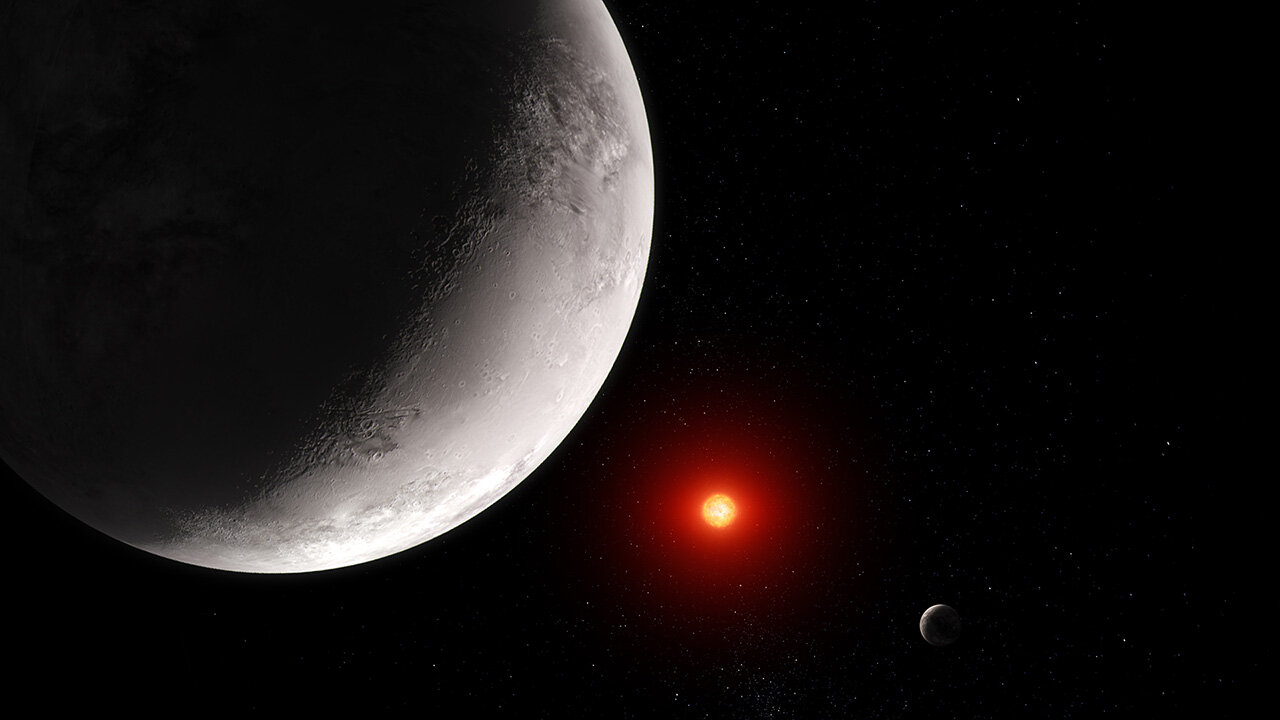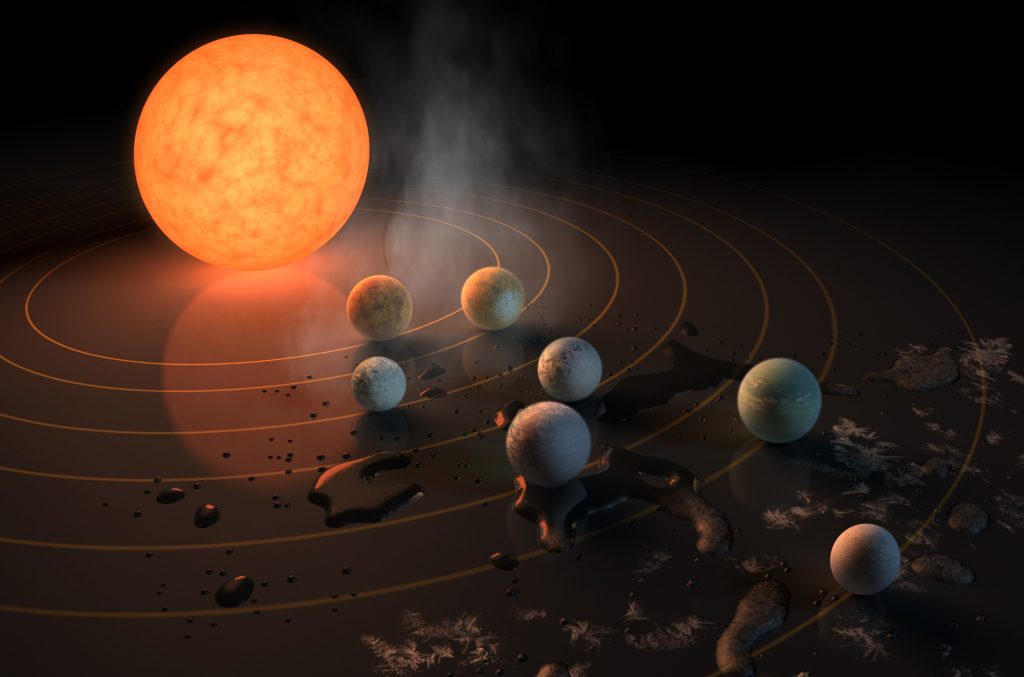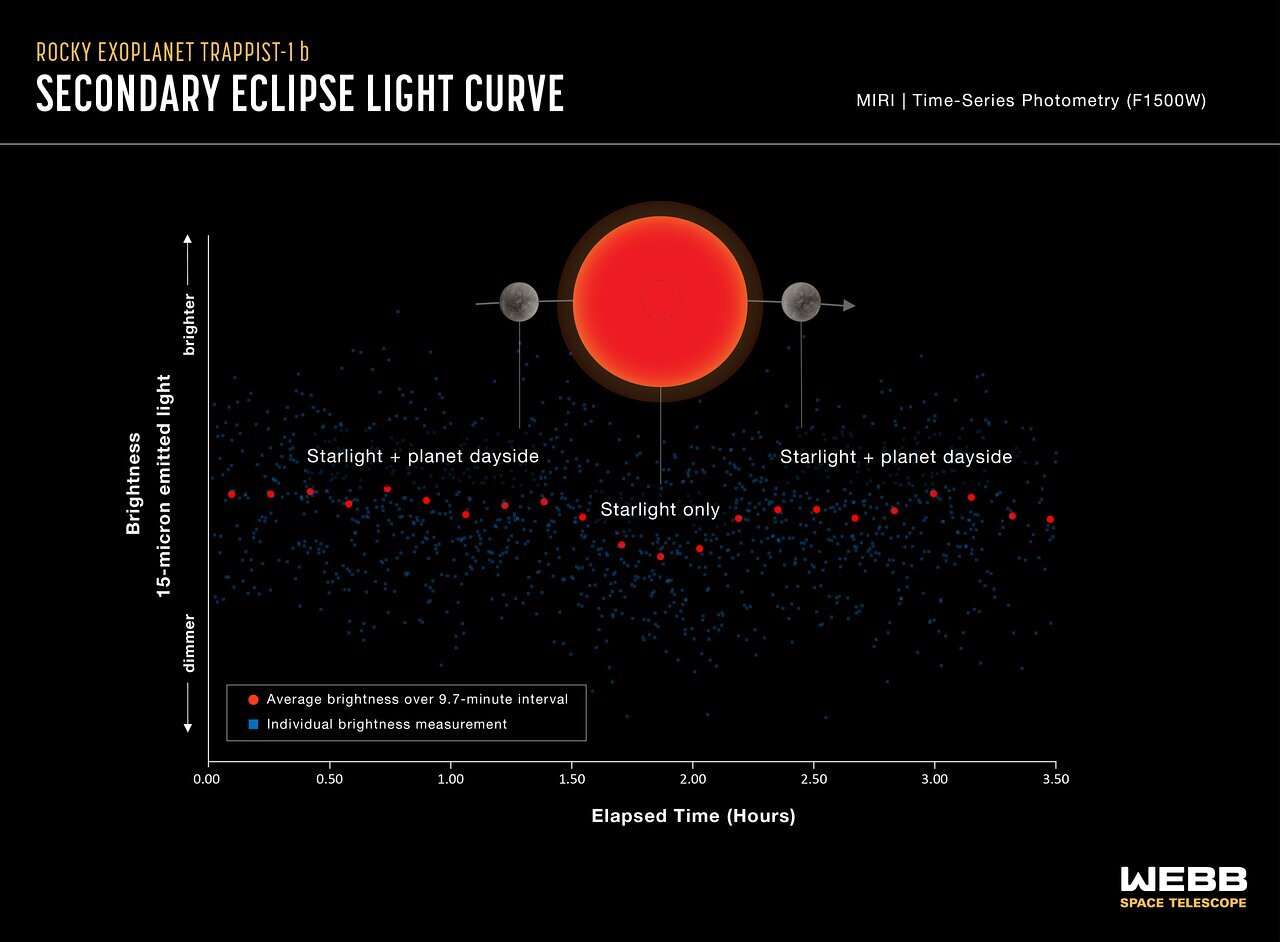Here's another interesting Stellar Flux visual comparing the Trappist 1 system with our own:
(Ref: JPL/Caltech)
 Stella
Stella
(Ref: JPL/Caltech)
Upvote
0
Starting today August 7th, 2024, in order to post in the Married Couples, Courting Couples, or Singles forums, you will not be allowed to post if you have your Marital status designated as private. Announcements will be made in the respective forums as well but please note that if yours is currently listed as Private, you will need to submit a ticket in the Support Area to have yours changed.


There are other reasons to study exoplanets besides searching for extra-terrestrial life. The physical properties of a planet that is being continually irradiated by flares from its parent star are also likely to be interesting.Why circa 2016 and earlier models are badly out of date:
Even before the James Webb Space Telescope it started to become apparent in just the last few years that Red Dwarf flaring was even much more intense and frequent than models expected, and thus far worse than was expected/modeled back in prior years....
Red Dwarf flaring was found in just the last few years to be much more severe than had been generally calculated by modeling that worked well for larger stars.
So that old models of red dwarf flaring became out of date (they'd need to be revamped or perhaps just replaced)
From the OP, but in more detail here:
"In all, the observed flare was roughly 100 times more powerful than any similar flare seen from Earth's sun. Over time, such energy can strip away a planet's atmosphere and even expose life forms to deadly radiation.
That type of flare may not be a rare occurrence on Proxima Centauri. In addition to the big boom in May 2019, the researchers recorded many other flares during the 40 hours they spent watching the star.
"Proxima Centauri's planets are getting hit by something like this not once in a century, but at least once a day if not several times a day," MacGregor said."

Enormous flare from sun's nearest neighbor breaks records
On May 1, 2019, researchers observed a record-setting flare from the star Proxima Centauri -- a burst of energy roughly 100 times more powerful than any similar event seen from Earth's sun.www.sciencedaily.com
This was only just 1 of several new observations meant to learn more about red dwarfs that turned out to surprise.
This showed up in the same year where some studies were being published that speculated that red dwarf flaring might not be so bad....
Here's a recent general update with a big picture look:
"The exoplanet Proxima Centauri b sits in the star's potentially habitable zone, and a flare that bright could eliminate the possibility of life or even liquid water on the planet. Even if Proxima Centauri flared that brightly once every one million years [* see my note below], or even longer, that could eliminate the possibility of life."
"The search for life or habitability on other worlds inevitably includes a focus on red dwarfs. Their plentifulness means they have to be studied in more depth. It could end up that many of the planets we think could be habitable, like the well-known TRAPPIST-1 planets, are simply subjected to too much radiation from their red dwarf hosts. The more variable they are, the less likely life is to persist and even flourish on exoplanets around red dwarfs."

Even the calmest red dwarfs are wilder than the sun, reveals paper
There's something menacing about red dwarfs. Human eyes are accustomed to our benevolent yellow sun and the warm light it shines on our glorious, life-covered planet. But red dwarfs can seem moody, ill-tempered, and even foreboding.phys.org
[* -- and recall from the first article above it flares significantly every day and that smaller but still major flares on a daily basis are a powerful effect]
If anyone is interested in additional details, there are more studies about the unexcepted frequency of powerful flares in the last few years, and I can offer more of those that I read in the last few years.
So, the upshot: we have to continue to do more observation, so that we know which models are wrong (even sometimes all!) among the competing models.
That's only normal in science though, where often in an area there are many competing models. It's typically the case that there are models where it's obvious at least some of them have to be wrong, even if we don't yet know which, or whether maybe it's all of them.
On eitherUpdate: Context (in blue) --
Context: in 2017 many popular science reports such as in newspapers and many websites use sensational headlines (jumping the gun in a big way) about the "7 Earth-like worlds" discovered around the red dwarf star Trappist-1.
Of course, not all media used the more sensational headline of "Earth-like", but instead many more carefully and correctly used the modifier "Earth sized".
But even some major news outlets that usually have good quality slipped up on that:
Scientists find 7 Earth-like planets orbiting nearby ultracool star
" This dim star hosts seven Earth-like planets within its habitable zone, according to a study published today in the journal Nature. Exoplanets are a dime a dozen these days, but due to unique properties in this exosolar system, the new discovery may usher in a movement in the hunt for habitable worlds — one where astrophysicists can ascertain the presence of life without traveling across the cosmos."
Scientists find 7 Earth-like planets orbiting nearby ultracool star
Exoplanets are a dime a dozen these days, but the Trappist-1 exosolar system stands out by hosting seven Earth-like exoplanets, according to a new study.www.pbs.org
That's just not fair to readers, to write or report that instead of being simply "Earth sized", these are thought "Earth-like". (maybe! but not so fast!)
"Earth like": Seven Earth-Like Planets Orbit One Nearby Star
"Wonderful": Wonderful potentially habitable worlds around TRAPPIST-1
"Earth like": 7 Earth-Like Worlds Orbit a Star So Cool, You Didn’t Know It Existed
etc.
So, in the popular imagination of many no doubt, 7 new planets a lot like Earth had been found. e.g. -- Perhaps 1 or more of them would be teeming with life and even mobile creatures or such?
I bet tens of millions had their hopes up, artificially pumped up. Will they still be interested in funding new telescopes if all 7 planets are a bust?....
Already, well before 2017, research had already been published calculating that red dwarf stars would likely degrade the atmospheres of small rocky planets (like Earth sized planets) near enough to the small cool red dwarf stars for a temperature range to allow liquid water. That would remove or sharply degrade the atmospheres of such small close planets at liquid water range temperatures...due to the intense stellar wind and flaring of the red dwarf stars on nearby planets (close enough for water to be liquid).
To manage to retain an atmosphere near a red dwarf star, a planet would need a strong magnetic field (and some good luck of other kinds also such as atmospheric renewal sources, etc.)....
There might be such a lucky planet around a red dwarf we can find soon...but that's a roll of the dice with lower odds.
There are stars thought to be more favorable than red dwarfs, and this isn't obscure or extremely hard to find information either.
Of course, I'm still interested in that low-odds chance of finding one of these 7 around Trappist-1 with an atmosphere and even a favorable atmosphere, but I'm objecting to the over-hyping of those worlds as 'Earth like' when we don't yet know....
That's what we are going to be determining soon....
It will be fascinating what we find, no matter what it is...
And results are in for the first one, the innermost planet of Trappist-1:
===========================================
It's got no atmosphere.
(in the manner of speaking like we'd say Mercury 'has no atmosphere', though of course it has a very slight, tenuous atmosphere that is constantly escaping)
And contrary to some reports, a lack of a significant atmosphere is not a surprise for at least some (or maybe a lot) of astronomers....
I'll also post in post #2 a nice video to fill in more detail from the basics about how these observations work, for general readers not familiar with those details.
"An international team of researchers has used the NASA/ESA/CSA James Webb Space Telescope to measure the temperature of the rocky exoplanet TRAPPIST-1 b. The measurement is based on the planet's thermal emission: heat energy given off in the form of infrared light detected by Webb's Mid-Infrared Instrument (MIRI).
"The result indicates that the planet's dayside has a temperature of about 500 Kelvin (roughly 230°C), and suggests that it has no significant atmosphere. This is the first detection of any form of light emitted by an exoplanet as small and as cool as the rocky planets in our own solar system. The result marks an important step in determining whether planets orbiting small active stars like TRAPPIST-1 can sustain atmospheres needed to support life. It also bodes well for Webb's ability to characterize temperate, Earth-sized exoplanets using MIRI.

Webb space telescope measures the temperature of a rocky exoplanet
An international team of researchers has used the NASA/ESA/CSA James Webb Space Telescope to measure the temperature of the rocky exoplanet TRAPPIST-1 b. The measurement is based on the planet's thermal emission: heat energy given off in the form of infrared light detected by Webb's Mid-Infrared...phys.org
I've heard this observation of no atmosphere referred to as a 'surprise' (at The Atlantic), and a 'disappointment' in another place -- but it's not at all that way: those are odd reactions in my view. Why wouldn't many people know an inner rocky (small) planet near a red dwarf would be atmosphere free or nearly so?...
That's been in research reports for years...
When I posted that here in CF several times, about different reports, it was just another article, that anyone in the field could have read, by a quick search even...
So, it was expected (at least to many astronomers and those of us that read their research):
or:
"Most planets in recent years thought to be in the 'habitable zone' or optimistically dubbed 'Earth like' aren't likely to be (since red dwarfs are the most common type of star). The actual magnetic field of the star itself can help strip the planetary atmosphere--
"These "Goldilocks" planets may enjoy temperatures and atmospheric pressures that allow life-giving water to exist, but likely orbit too close to their stars to escape the effects of the star's strong magnetic fields and the associated radiation."
Astronomy News
Here is a comparison between the mathematical process which remaps the pixel values in the image and using the camera software. Professional astronomers use FITS Liberator for processing images which I find does not enhance the faint detail as well as the mathematical process. Wow, that looks...www.christianforums.com
And more (I think I posted it way back already in 2017 also, but the above is enough to illustrate.
